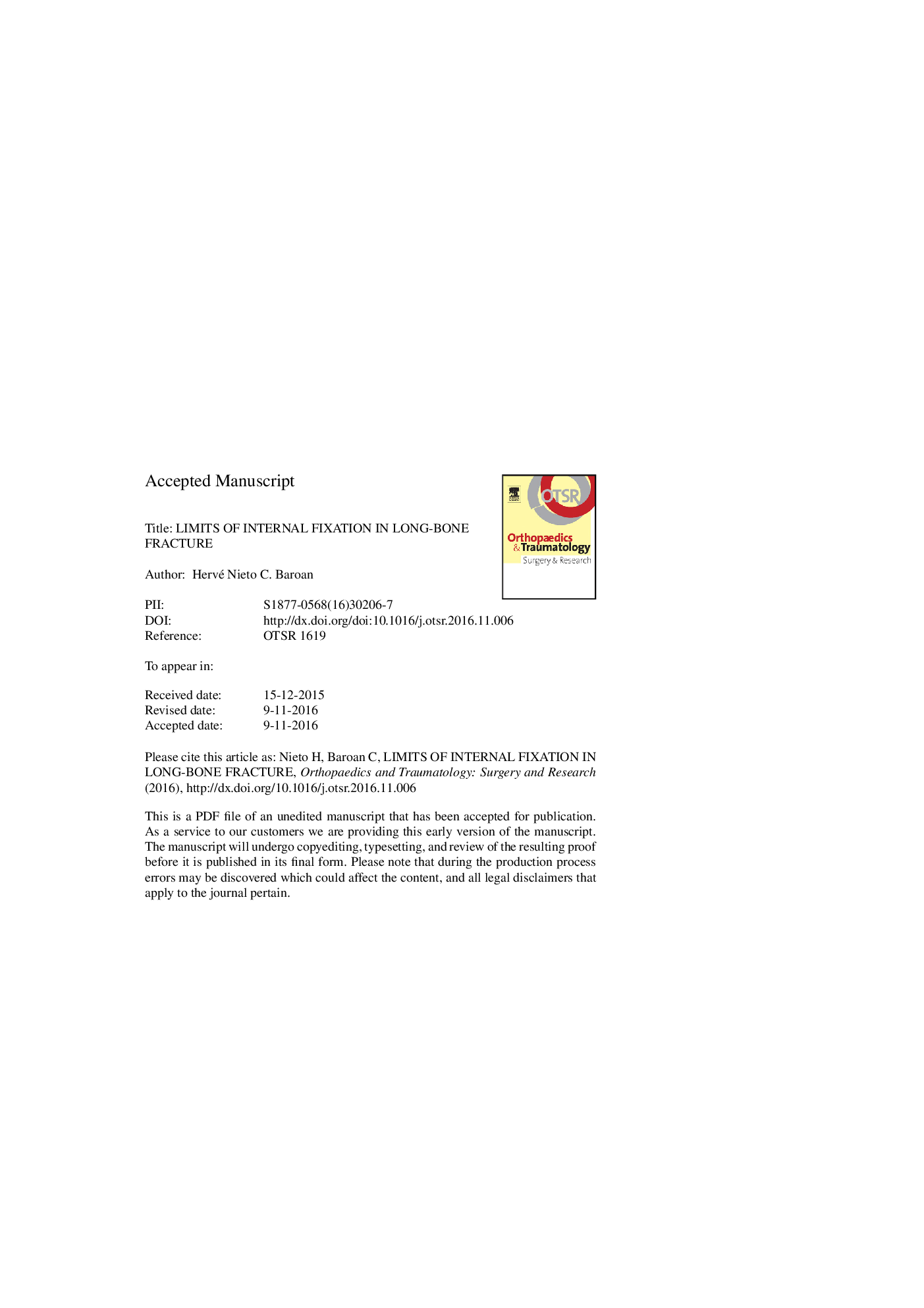| Article ID | Journal | Published Year | Pages | File Type |
|---|---|---|---|---|
| 5711184 | Orthopaedics & Traumatology: Surgery & Research | 2017 | 16 Pages |
Abstract
Alternatives to internal fixation of long-bone fracture comprise, depending on location, external fixation or joint replacement. Limitations comprise risk of infection and functional outcome quality, which vary according to technique. The present study examines these limitations, based on comparative or large-scale studies from which certain significant results emerge. Four main questions are dealt with: (1) the present role of locking plates; (2) conditions for intramedullary nailing in Gustilo grade IIIb open fracture; (3) the limitations of conversion from external fixation to intramedullary nailing in open lower leg fracture; (4) and the limitations of definitive anterograde femoral nailing in multiple trauma. Locking plate fixation has yet to prove clinical superiority in any of the anatomic sites for which good-quality comparative analyses are available. Infection risk in Gustilo grade IIIb open lower leg fracture is equivalent when treated by intramedullary nailing or external fixation, if wound care and debridement are effective, antibiotherapy is initiated rapidly and skin cover is restored within 7 days. Conversion from primary external fixation to intramedullary nailing is possible if the external fixator was fitted less than 28 days previously and skin cover was restored within 7 days. The pulmonary and systemic impact of peripheral lesions or definitive anterograde intramedullary nailing of femoral fracture in multiple trauma calls for caution and what is known as “damage-control orthopedics” (DCO), a term covering the general consequences of both the initial trauma and its treatment. Femoral intramedullary nailing is thus contraindicated in case of hemorrhagic shock (blood pressure < 90 mmHg), hypothermia (< 33 °C), coagulation disorder (platelet count < 90,000) or peripheral lesions such as multiple long-bone fractures, crushed limb or primary pulmonary contusion. In such cases, external fixation or retrograde nailing with a small-diameter nail and without reaming are preferable.
Keywords
Related Topics
Health Sciences
Medicine and Dentistry
Orthopedics, Sports Medicine and Rehabilitation
Authors
H. Nieto, C. Baroan,
